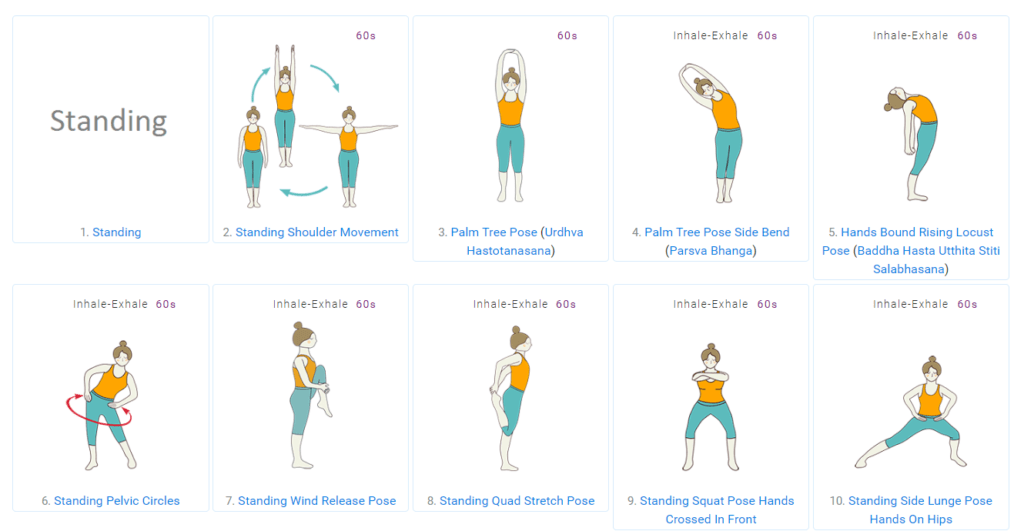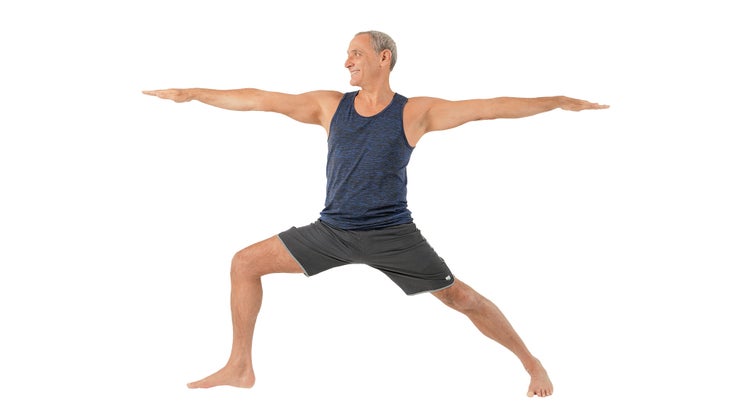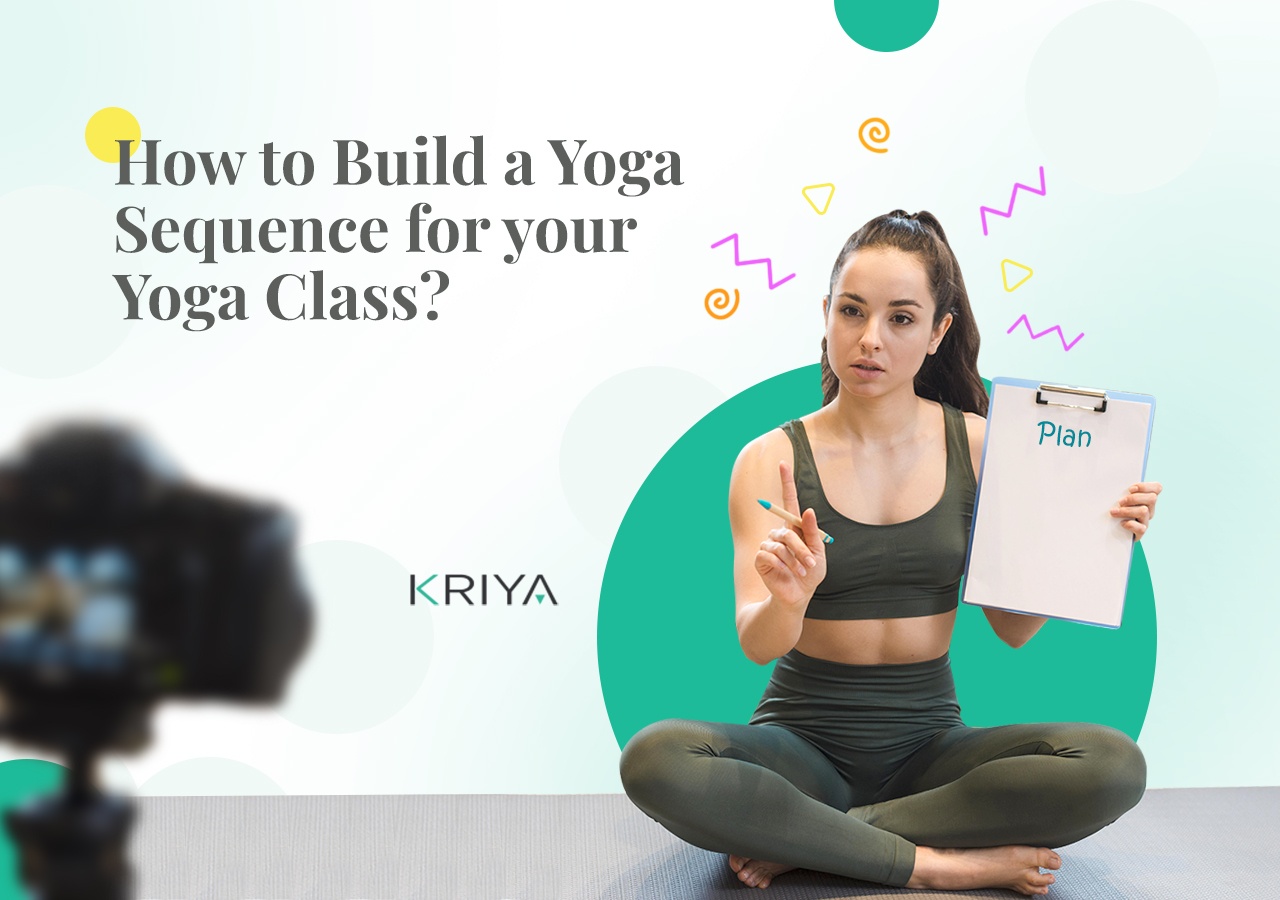
How to Build a Yoga Sequence for your Yoga Class?
It’s time to recall your memories of being a school student and remember how your teacher in class taught you a lesson on your favourite subject. Did she use playing cards to teach words and alphabets, rhymes to make us learn the names of rivers or a math theorem, pipes to teach us the measurements and drawing charts to decipher the anatomy of our human body?
This means even though you have a Bachelor of Education degree in Yoga or merely hold any diploma or certificate in Yoga training, you need a lesson plan to teach a Yoga class. Like any other subject, yoga requires a plan or a Yoga flow sequence to teach Yoga to Yoga students.
Many Yoga teachers create sequences; some use an online tool to prepare one. For a smooth Yoga class, you must first know the dynamic flow of how each posture connects.
See how to find the best Yoga teacher for your Yoga studio
According to Workout Labs, it’s not enough to shout out postures in hopes they will fluidly move together. If you do this, you should kindly stop to prevent student injury.
Each Yoga Style has different Yoga Sequences.
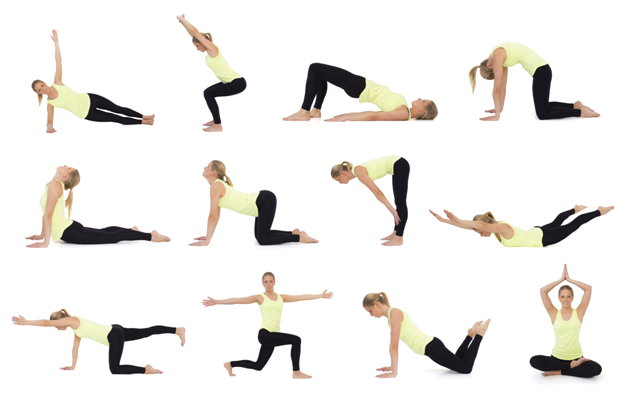
Well, to prepare a lesson plan or a sequence for a Yoga class, you first need to find out which type of yoga class you want to teach. For example, the sequence for a Vinyasa flow Yoga class might differ from that for Iyengar Yoga. Similarly, the sequence for teaching each Yoga pose might be different.
For example, while learning the mountain pose or Tadasana, my Yoga teacher started the class with simple muscle strengthening exercises, followed by walking on toes and moving further with raised arms, and then began to teach various poses of this asana. So, to teach this Tadasana with Yoga styles, you must follow a different sequence.
In Ashtanga Vinyasa Yoga, Tadasana is performed on the toes. It is the beginning and ending asana in the Surya Namaskar sequence, which is used to warm up the body. If performed with full Vinyasas, it is sometimes interspersed throughout the entirety of the Ashtanga Series.
In addition, it is a foundational pose for all standing poses. Wider feet are standard in Vinyasa styles of Yoga and provide a more stable base in this and other standing asanas.
The Vinyasa and Hatha sequences generally focus on breathing and self-energy while targeting specific body areas.
In Iyengar Yoga, Tadasana is performed with arms that can be raised over the head or kept at the sides of the legs. So, each yoga pose sequence depends on the type of yoga you will teach.
How to prepare a Yoga Sequence?
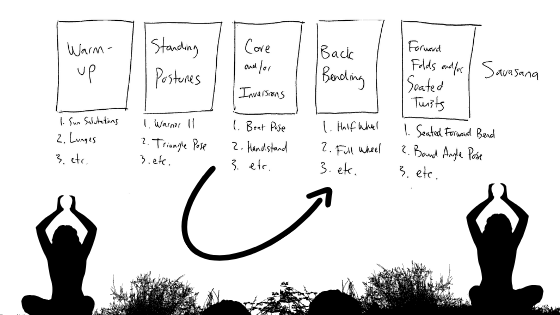
Before preparing a Yoga Sequence for your Yoga class, remember that new students need a different yoga plan.
Questions to ask yourself before planning your class
Ask yourself these questions
- What is the time of the day (eg early morning vs late evening)
- Season, the months (eg summer vs winter)
- Phase of the moon we are on (eg, energy levels, women’s cycles)
- What is happening in the world we can relate to
- What is happening in your life, we can relate to
- Any theme / yama / niyama / chakra we would like to focus on
- What is your timeframe
- Which poses are you going to offer options
- Which poses are you going to teach for alignment
- Any inspiring quotes
Regular or advanced Yoga students will require different poses or options. This means you can prepare options and alternatives for your students and change according to their needs and abilities.
1. Start with Centring
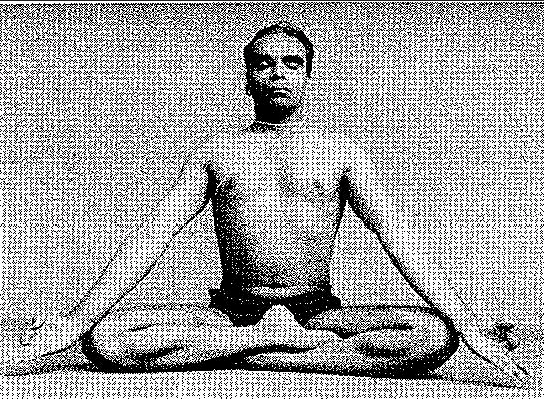
Remember that Yoga is a subject related to a more physical aspect, and the human body has to be prepared to start Yoga lessons. To give clarity to the body and to provide it with a space to begin the show, you need to tune the body with a few basic actions, like a short meditation or breathing exercise of inhaling and exhaling.
This can be covered for at least 10 minutes for a new yoga student. These exercises can help your students collect and concentrate their awareness.
Pranayama, or working correctly with your breath, is the best Yoga practice to follow here, or it can also be done after physical asanas. Starting class with a short breathing exercise will allow your students to cultivate awareness and presence in their bodies and minds. Lion’s Breath, Alternate Nostril breathing, Sama Vritti, Kapalabhati, and Ujjayi are just some of the styles of Pranayama Yoga poses you can include at any point during your sequence.
2. Warm-up Postures
Then prepare students for the class and poses. Warm-up reduces the risk of injury and prepares students for the peak or maja pose(s).
Teach simple exercises to warm the body in preparation for your practice theme. Warming up is essential so your body gets ready for more vigorous poses. This can be carried out for another 10-15 minutes.
3. Sun Salutations or Surya Namaskar
Watch Donna Farhi practising Surya Namaskar.
Choose a Sun Salute variation (Surya Namaskar) and instruct them through 2–10 rounds.
Sun Salutes are about breathing and flow. At this stage, don’t worry too much about alignment unless you see a risk of injury.
4. Standing and Balancing Poses
Now, your students can feel that their bodies are ready for the real workout. As the muscles are flexible enough to take the different Yoga poses, you still need to teach the basics of Yoga: balancing the body by standing Yoga poses. These standing asanas may include warriors, lunges, and other standing postures to create a ground balance. This can be held for a full 20 minutes or so.
5. Standing Twists / Inversions / Backbends
Difficult for most of us, these poses are beneficial. They are great for digestion and detoxing the body. Make sure your students are adequately warmed up. Take your time to teach and instruct these poses.
6. Seating Asanas
After balancing, the body must also know how to control the muscles and coordinate in sitting poses. Here you can introduce a few sitting asanas so that besides learning to control mind and body in a sitting position, it also learns to relax when needed. You can take approximately 15 minutes to perform the seating asanas on the Yin part of the class.
7. Pranayama / Meditation
This section is optional, and you may decide not to include it. Pranayama uses breath techniques and exercises to direct and expand the flow of prana in our bodies. As a result, our breathing improves, our bodies function better, and we clear and calm our minds.
See also Which Pranayama Is Best For Me?
8. Corpse Pose or Savasana
You can end your class sequence by calming the student by returning to their original state, Savasana, the resting posture. For a typical 60-90-minute class, please allow at least 10 minutes of Savasana to end your class.
Yoga sequences are linear, meaning one asana sequentially follows another. You can teach classes by starting with less challenging Yoga poses, gradually moving to the more challenging ones, and again returning to the easy and simple ones to balance body strain and stress without causing any discomfort to Yoga students.
You can consult the Tummee Yoga Sequencing builder for Yoga teachers here for any Yoga class you want to teach.
Use of Audio and Visual Media
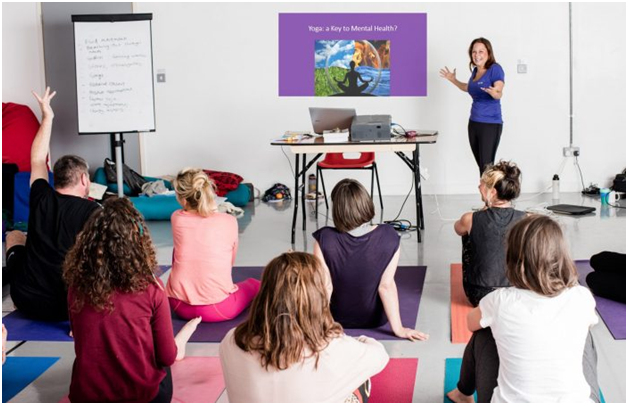
Who doesn’t use audio and visual aids to teach a lesson in class? Students learn best by observing and copying what they see and copying a Yoga teacher. But learning is more effective when sensory experiences are stimulated.
These include pictures, slides, videos, and other audiovisual tools. You can create a display board and design a theme each day for the Yoga class you will teach that day. Draw some Yoga postures on the whiteboard or use cards with Yoga poses and distribute them to the students so they can grasp the pose easily by looking at and memorising it.
You can also try PowerPoint presentations, teach them through other learning methods, or end the class with a show to recall what they have learnt for the day.
Using visuals helps the Yoga teacher present the lesson effectively so that students learn and retain the concepts better for a longer duration. But remember that improper and unplanned use of these aids can hurt the learning outcome. So you should be well-trained through in-service training to maximise the benefits of using these aids. Your Yoga curriculum should be designed to provide options for activity-based learning through this means.
A few tips to begin with Yoga Sequences
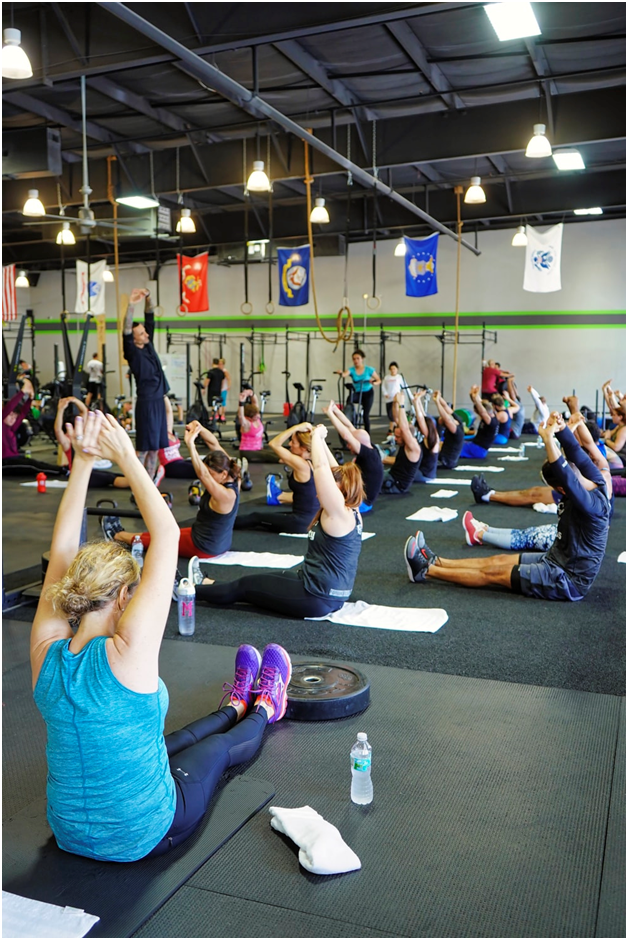
- Always include an inspirational speech or story to begin your yoga sequence in class. This will motivate the students and prepare them mentally to learn easily.
- Never use negative words in your Yoga sequence. Remember that teaching a yoga asana to a student who doesn’t catch up according to your teaching style doesn’t mean you will talk negatively about him and say you can’t learn. You can build a separate yoga sequence for him to help him learn.
- Just because you enjoy complicated yoga sequences in your practice doesn’t mean you should attempt to teach this way. Note that yoga students enjoy and benefit from more straightforward sequences where they can focus on the present moment instead of trying to keep up.
- The beginners’ yoga class sequence should include fewer postures repeated more frequently so that your students can intuitively move from one position to the next.
- Seek advice from big yoga studio owners who have already built many types of yoga sequences and can be an inspiration for a small yoga studio owner.
- Focus on a yoga pose one at a time. Centre your class on that yoga pose only until the students are comfortable moving to the following sequence. By having a clear and simple yoga pose, you and your students can practice with purpose and intention.
- Carry a notebook to the class, where you can jot down what you feel is missing in your yoga sequence and implement it in the coming lesson plans. This way, you can even refer back to older classes, which saves time when you need to map out a new class.
- Teach what you practice first. Every teacher must grasp the lesson before teaching it in class. Understand how each posture and transition feels in your body, and then you will know where to adjust your sequence to flow more fluidly. You can record your sequences and learn from yourself.
- Don’t prepare and plan too many yoga sequences. Take one sequence and follow it according to the type of yoga you teach. One or two sequences are enough to begin a yoga class.
- At the end of your yoga class, don’t just roll up your mat and move away. But take out few minutes to discuss with your students and get feedback on what you have taught. If any student feels discomfort doing a yoga pose, change the course of action. Feedback from Yoga students helps you create the best plan for your yoga class to progress.
- You can draw inspiration from your favourite yoga teachers and do your best to remember or imitate the sequences taught in class.
Finally, have confidence in your own yoga experience and what you have learnt to teach. No yoga sequence is perfect at first because yoga is a journey to learn, practice and grow.
Once you teach your sequence, observe your students. Notice their reaction, how they feel, and their expressions. Some teachers ask at the end of class if you can now do any pose. This is your feedback. If you see students twisting, that was missing in your sequence.

